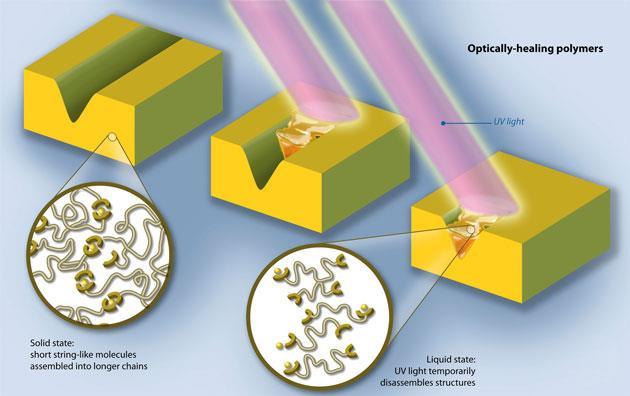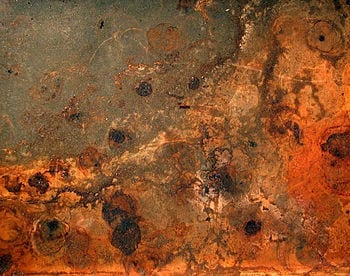What if mending a ripped garment, or repairing a leaky storage container, was as easy as shining a light on the damage?
We’re not there yet, but such materials could be possible in the future—researchers have now demonstrated a new way to produce light-healed polymers. In the April 21 issue of Nature, a group from Case Western Reserve University, the U.S. Army Research Laboratory and the University of Fribourg in Switzerland reported the creation of polymers that heal their own wounds under brief exposures to ultraviolet light. (Scientific American is part of Nature Publishing Group.)
Many materials can self-repair with the help of heat, which liquefies the material and allows it to fill cuts, cracks, or gaps. The light-healed polymers work in much the same way: ultraviolet light excites the material, causing it to heat up and temporarily liquefy. When the light source is switched off, the polymer cools and resolidifies, having filled its cracks and gashes.
“We’ve shown that cuts or scratches in such materials can be healed by exposure to lamps—simple lamps such as those dentists use, for example, to cure fillings,” study co-author Christoph Weder of the University of Fribourg said in an April 19 teleconference. Some of Weder’s group’s experimental materials, which include metal ions such as zinc or lanthanum in a rubbery polymer, were able to regain their original toughness after light-induced repairs.
The polymers are composed of small building blocks assembled “to basically mimic the molecular architecture of normal polymers,” Weder explained. “We have small building blocks with sticky end groups, and those sticky end groups are kind of glued together. We heal these materials by exposure to light, and what light does is it unglues these sticky end groups and liquefies the material.”
The healing process is relatively quick—two exposures of 30 seconds each did the trick for one experimental polymer, which quickly heated up to 220 degrees Celsius and liquefied. A 2009 study from another group reported a similar self-repair effect for polyurethanes, but that effect required much longer UV exposures. Weder said the researchers were now investigating how to get the same results from other wavelengths of light—for instance, a polymer that repairs itself under illumination by blue visible light.










